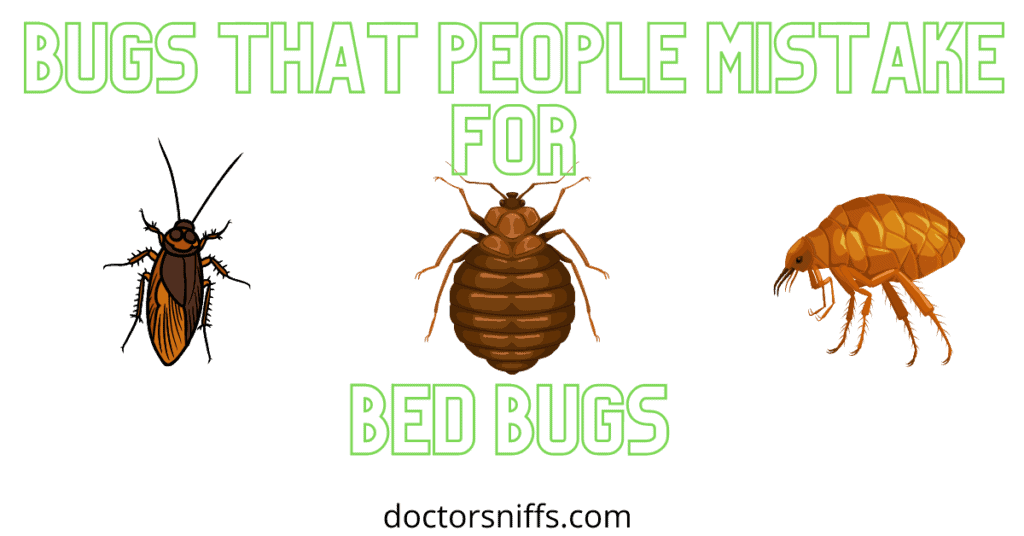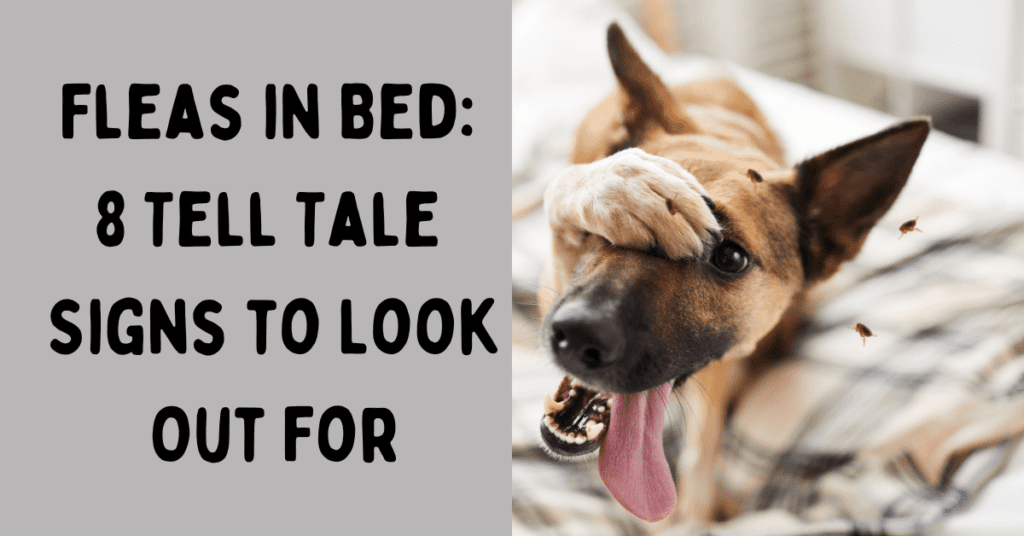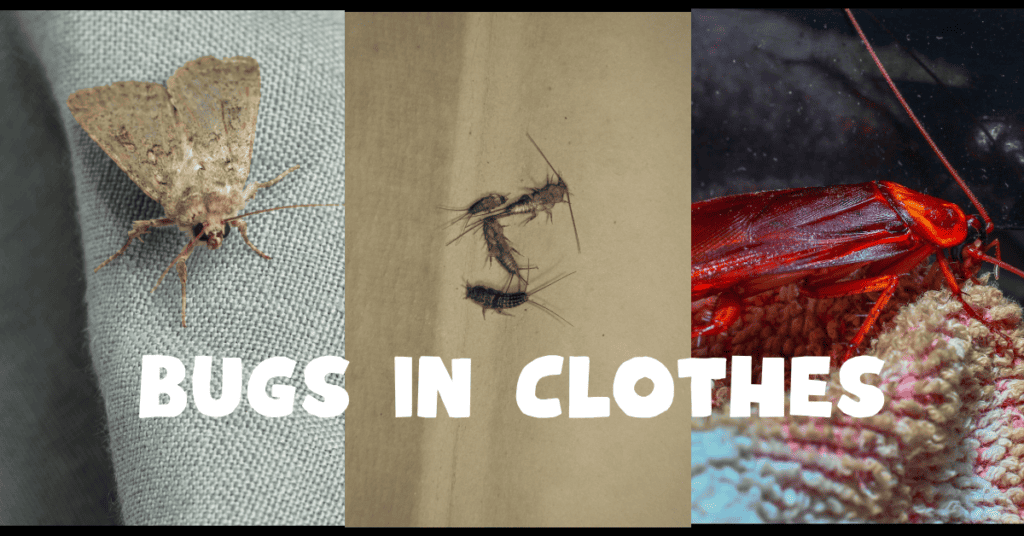Finding brown bugs in your home can be alarming, especially if they turn out to be bed bugs or fleas.
To make your bug identification process a little less daunting, we’ll provide you with essential information on their appearance, typical habitats, and ways to prevent each type of brown bug.
By having a deeper understanding of these brown bugs, you’ll be more equipped to manage and protect your home from unwanted visitors.
So let’s dive into these 12 examples of brown bugs, and remember – knowledge is power when maintaining a bug-free living environment.
- Brown Bugs In A House – Identification Basics
- Types of Brown Bugs: Identification
- Cockroaches
- Carpet Beetles: Brown Bug Identification
- Bed Bugs
- Fleas
- Drugstore Beetles – Tiny Brown Bugs
- Brown Marmorated Stink Bugs
- Indianmeal Moths – Tiny Brown Bugs That Fly
- Termites – Tiny Brown Bugs in a House
- Ants – Small Brown Bugs
- Flour Beetles – Tiny Brown Bugs
- Earwigs
- Spiders
- Prevention and Control – For Brown Bugs In A House
- Final Thoughts for Brown Bugs Identification
Brown Bugs In A House – Identification Basics
Size and Shape
When trying to identify brown bugs in your house, it’s essential to consider their size and shape. Some common brown bugs, like carpet beetles, are tiny and oval, while others, like cockroaches, are bigger and elongated.
Remember that some brown bugs may appear differently depending on their stage of development. For example, young bed bugs are much smaller than fully grown adults.
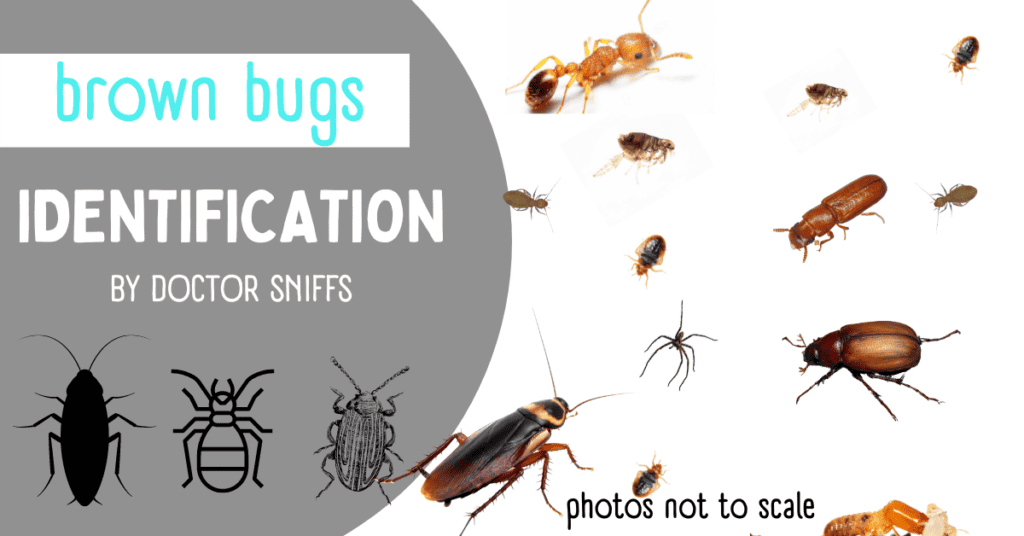
Color and Texture
It would help if you also took note of the brown bug’s color and texture. Some insects, like spiders, could have a shiny or glossy appearance, while others, such as brown marmorated stink bugs, have a dull and speckled appearance.
If you are seeing stink bugs in NY or any other city, it’s important to remember that they are generally not harmful to humans.
Observing any distinctive markings or patterns on the bugs is essential for accurate identification. Remember that lighting conditions could affect the color perception of the bugs, so try to observe them in a well-lit environment.
By taking note of these critical features, you will have a solid foundation for identifying the brown bugs found in your house.
Types of Brown Bugs: Identification
Cockroaches
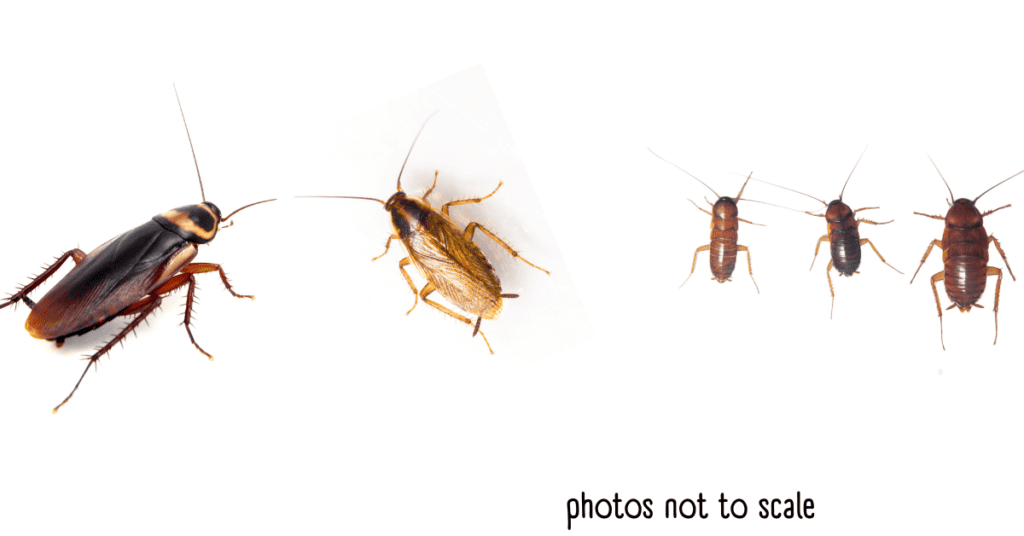
Cockroaches are common brown bugs found in homes. The size can differ depending on what species you find and their life stage.
For more info on brown household bugs: Look at the differences between water bugs vs roaches, you do not usually find water bugs indoors, while many roach species are indoor pests
They’ll thrive in dark, damp areas like kitchens and bathrooms. Keep your living spaces clean, clutter-free, and dry to deter these pests.
Check out some cockroach-proof containers to help you deal with an infestation.
How to Identify Cockroaches – Common Brown Bugs in A House
- German cockroaches are under 15 mm and have 2 vertical stripes
- American roaches have a size that’s over 30 mm
- Brown-banded cockroaches have horizonal stripes and are 10-14mm
- Reddish brown with two antennae
- Fast moving
- Some have wings
- They tend to scavenge for food at night
Carpet Beetles: Brown Bug Identification
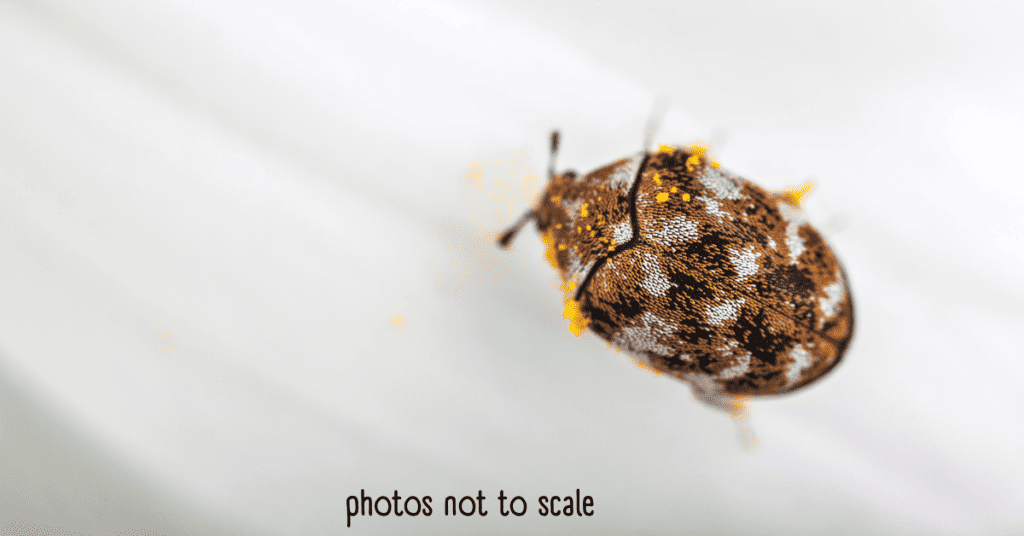
Carpet beetles are small, oval-shaped insects that come in various colors depending on the species. Their larvae feed on fibers, pet hair, and other organic materials.
Regular vacuuming and cleaning of couches, headboards, box springs, and carpets help prevent infestations.
Learn more: Where do carpet beetles come from?
How to Identify Carpet Beetles – A Type of Brown Bug in Your House
- They’ll be between 2 and 5 mm, depending on what species you find.
- You may see the hairy larvae instead of the actual adult beetle.
- They have rounded bodies with harder-looking shells.
This article may have Amazon affiliate links; we earn a tiny commission if you finalize a purchase.
Bed Bugs

The dreaded bed bugs (many people’s worst nightmare) are tiny (1.5mm-6.5mm), flat insects that feed on human blood.
These creatures hide in mattresses, bed frames, and other cracks and crevices. Launder bedding frequently and inspect sleeping areas for early signs of bed bugs.
How to Identify Bed Bugs – Types of Brown Bugs in Your House
- Depending on what stage you find, the size ranges from 1.5 – 5mm.
- It’s a flat, reddish bug with six legs and two antennae. If it recently fed on blood, it will not appear flat.
- Look for bed bug poop (droppings) on or around your bed.
Fleas

Fleas are small, wingless parasitic insects that bite and feed on the blood of pets and humans. But how big are fleas? Can you see them? Fleas are around 3 mm in lenghth, and their larvae stage is 5 mm.
Inspect your pets frequently and use flea preventatives to avoid infestations. Because if a flea jumps from your yard onto your pet, the chances of an infestation are lower if they are on preventatives.
How to Identify Fleas – Brown Bugs in Your House
- Look for laterally flattened bugs under 3mm.
- Fleas have a lifecycle that produces larvae; look for flea larvae on floors, beds, carpets, or furniture.
- You might see brownish-red jumping bugs moving fast in your pet’s fur.
Drugstore Beetles – Tiny Brown Bugs
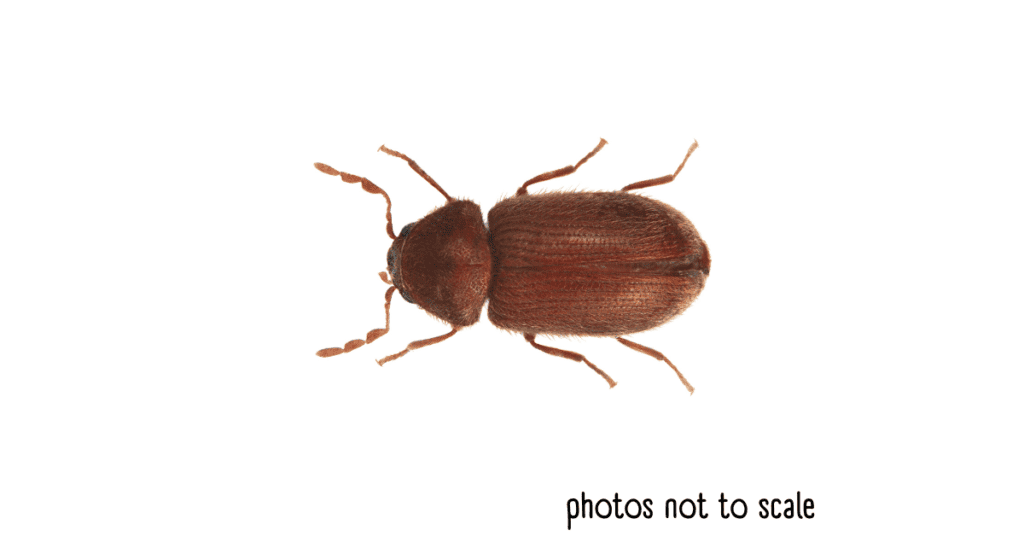
Did you know they are named drugstore beetles because they were once commonly found infesting pharmaceutical products in drugstores? Drugstore beetles can cause significant damage to stored food products and can be challenging to control once they infest a storage area.
You may see a few of these tiny brown bugs wandering your home from time to time.
How to Identify Drugstore Beetles – Small House Beetles
- They have an oval shape and measure 1.5 to 3.5 mm in length.
- Their coloration ranges from light brown to reddish-brown, and their backs have a distinct longitudinal line.
- Their antennae will have a three-segmented club-like appearance.
- You can’t see their head from above.
Brown Marmorated Stink Bugs
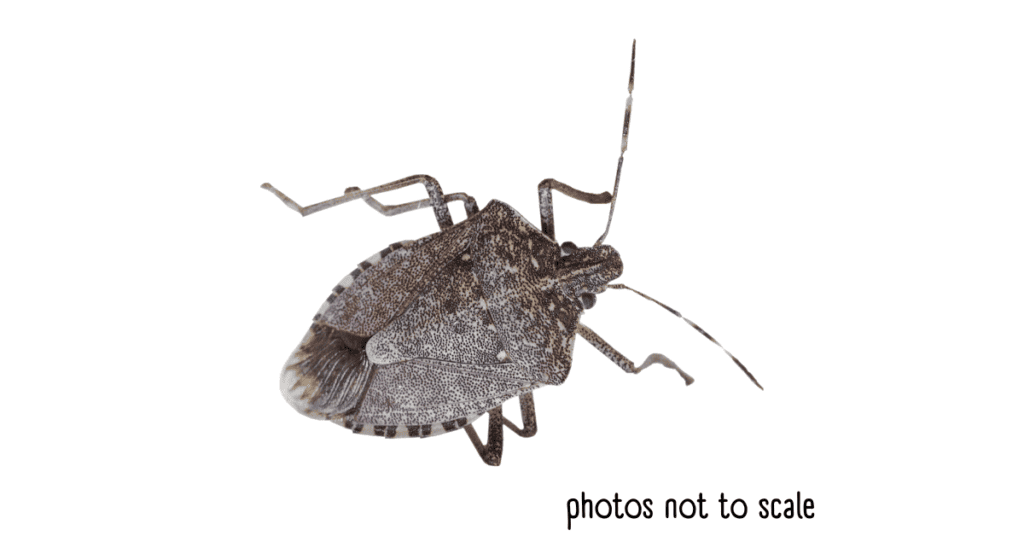
When threatened or crushed, these large (up to 17mm) shield-shaped brown bugs produce a pungent odor. Some of our clients mistake them for a bed bug: learn more about a bed bug vs. a stink bug.
If you seal cracks and crevices around your home, you’ll prevent them from entering. However, if you see a few, you can quickly put them back outside!
How to Identify Stink Bugs – Brown Bugs in Your House
- Giant shield-shaped bugs with a speckled pattern and marbled spots on the back.
- They measure up to 17 mm in length.
- Two antennae with a white band at the last antennal segments.
Indianmeal Moths – Tiny Brown Bugs That Fly
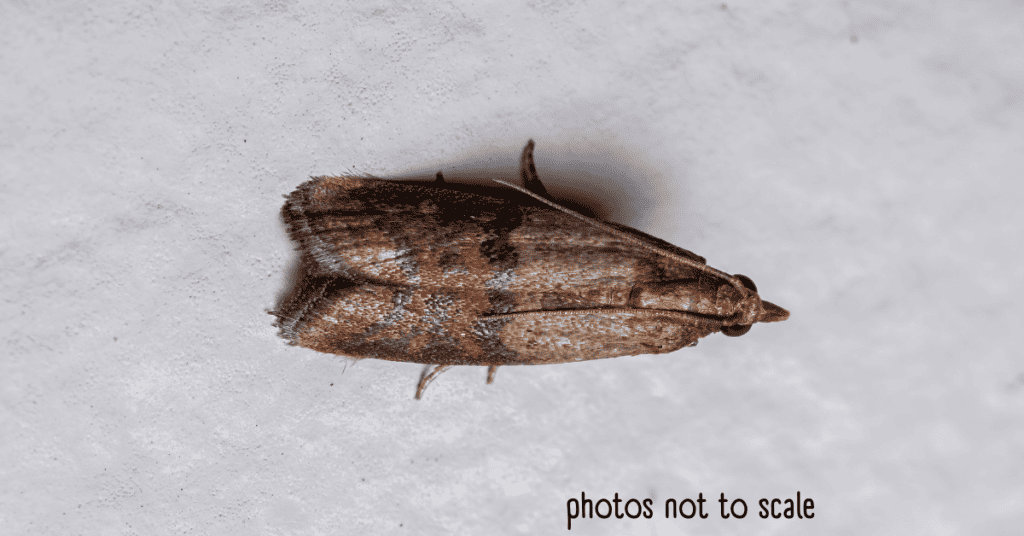
These moths with bicolored wings are nocturnal and attracted to lights. Indianmeal moths will infest stored food products like flour, grains, and nuts.
Since they are one of the more common bugs in flour, you’ll want to ensure proper food storage and regularly clean pantry shelves to avoid infestations. Use airtight containers for all food storage.
How to Identify Indianmeal Moths – Tiny Brown Bugs in Your House
- A wingspan of 16-20mm.
- It has a tan, brownish, copper wing color.
- The larvae can range in color from white to yellowish-pink.
- When they fly, they do it in a zig-zag manner.
Termites – Tiny Brown Bugs in a House
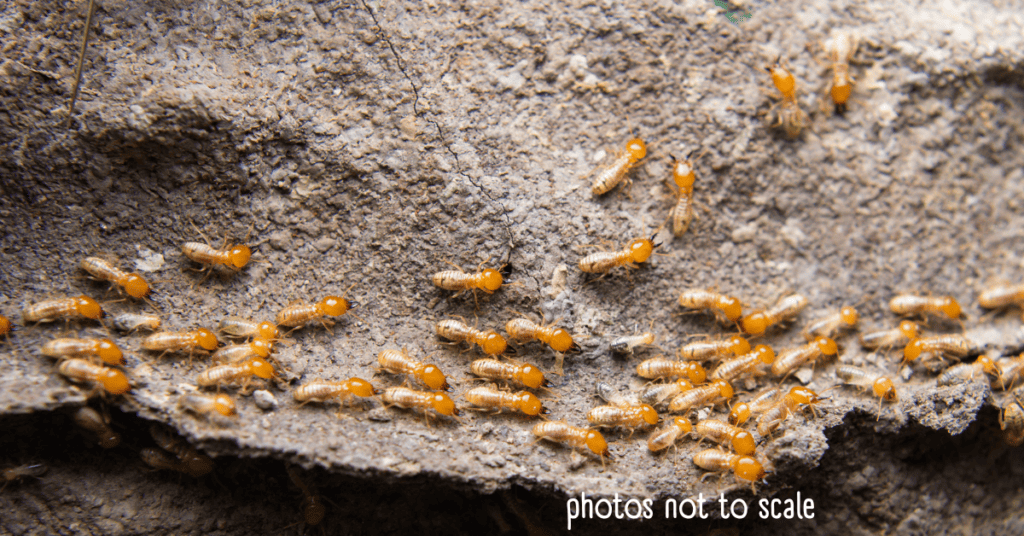
There are many species of termites, but the brownish ones are the subterranean, drywood, and Formosan termites. Termites are wood-eating insects that can cause extensive damage to structures.
You can sometimes find signs of termite damage in a basement.
Regularly inspect your home for signs of termite damage and activity, such as mud tubes or damaged wood. Remember that termites differ from carpenter ants, so you want to ensure the two are distinct, as the treatment protocol differs.
Learn more about the differences between carpenter ants vs. termites.
How to Identify Termites – Tiny Brown Bugs in Your House
- Winged, dark brown/black insects with hardened forewings and membranous hind wings.
- They are 2.5-3 cm long when the wings are fully extended.
- Termites have straight antennae, while ants on the other hand, have elbowed antennae.
- A termite will have a straight, vast body and no pinched waist like an ant.
Ants – Small Brown Bugs
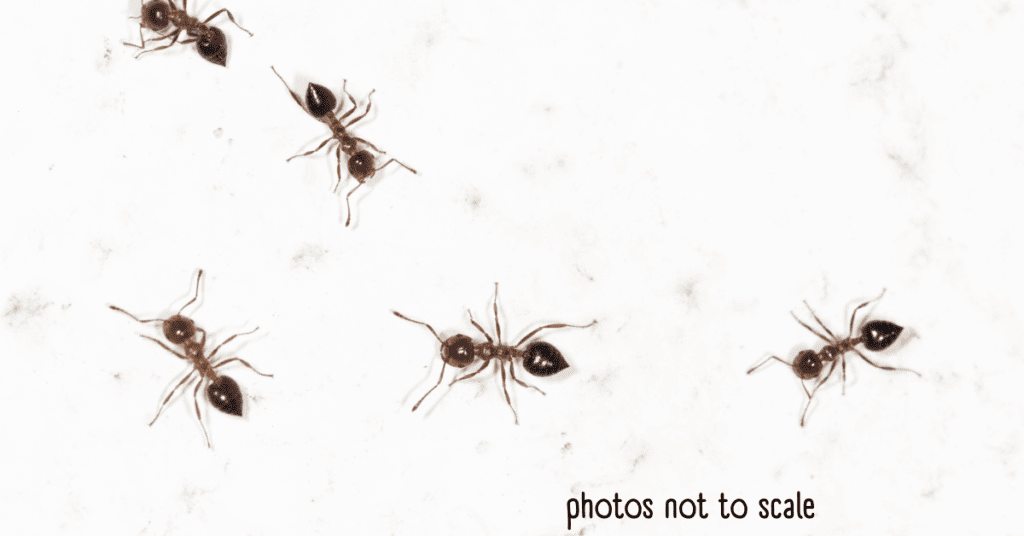
Ants are social insects living in colonies and entering homes for food and moisture. Keep your kitchen clean, sanitized, and store food in sealed containers to prevent ant infestations.
You can quickly identify ants as they have a pinched waist and elbowed antennae. Depending on the species, their size ranges from 1 to 15 mm.
Some of the ant species in the category of brown bugs are thief ants, odorous house ants, tawny crazy ants, leafcutting ants, pavement ants, harvester ants, moisture ants, big-headed ants, and Allegheny mound ants.
How to Identify Ants – Brown Bugs in Your House
- Worker ants are usually between 2-5 mm long.
- Their color varies depending on the type, but some varieties in the “brown bug” category are listed above.
- They have three recognizable body regions: head, thorax, and abdomen.
- You’ll see scouts in kitchens and bathrooms; check out our complete guide on bathroom bugs for more details.
Booklice – Tiny Brown Bugs

Booklice, also known as psocids, are tiny, wingless, pale-brown insects that feed on mold and mildew. They thrive in damp environments, so maintain proper humidity levels while reducing clutter to deter them.
Despite their name, booklice do not feed on books and do not cause significant damage to them. However, their presence can be a nuisance and indicate a moisture problem. Booklice are generally harmless to humans and do not transmit any diseases.
How to Identify Booklice – Tiny Brown Bugs
- Small, soft-bodied insects around 1-3 mm in length.
- Wingless and pale brown/grayish.
- Their antennae are thread-like.
- Booklice has a large head and big eyes.
- They can move quickly from one area to another in search of food.
Flour Beetles – Tiny Brown Bugs
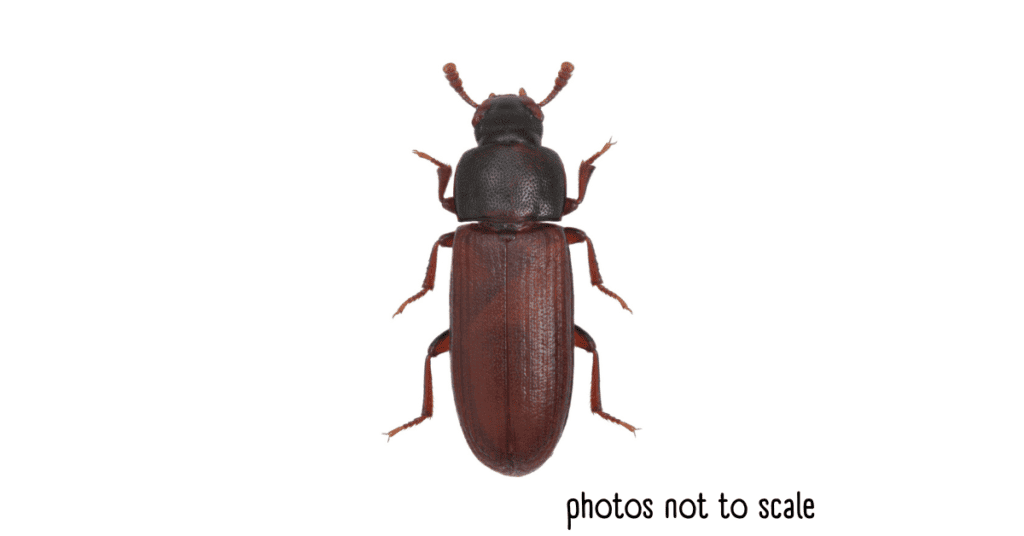
Within the flour beetle family, you’ll find precisely the types known as the red flour beetle (Tribolium castaneum) and the confused flour beetle (Tribolium confusum).
Flour beetles infest dry food products like flour, cereals, and grains. Be sure to store ALL dry goods in airtight containers and keep your pantry clean to avoid infestations.
However, many of our clients will find one wandering in the bedroom. So if you see a “flour beetle in the bedroom,” don’t panic. You’ll want to check through your stored foods to see if there is any infestation.
If you find the source, you’ll want to dispose of the grain products.
How to Identify Flour Beetles – Tiny Brown Bugs
- Small elongated shape, ranging from 1.5-3 mm in length.
- Reddish/brown with a distinct longitudinal line on their back.
- Antennae have a segmented club-like appearance.
- Their wings are short, and only the red flour beetle flies.
Earwigs

Earwigs are small, elongated insects characterized by their pincer-like cerci at the end of their abdomen. They are typically reddish-brown or black and have a flattened body measuring about 0.5 to 1 inch long.
Earwigs have two pairs of wings: the short and leathery front wings and the hind wings are membranous and folded beneath the front wings.
They also have long antennae and prominent compound eyes. Despite their intimidating appearance, earwigs are generally harmless to humans. They are beneficial insects as they feed on other insects and plant matter.
How to Identify Flour Beetles – Tiny Brown Bugs
- Pincer-like cerci at the end of their abdomen.
- Dark reddish/brown.
- Flattened body shape and measure 0.5 to 1 inch in length.
- Two pairs of wings, with the front wings being short and leathery, while the hind wings are membranous and folded beneath the front wings.
- Long, slim antennae and prominent compound eyes.
- Thin legs that are well adapted for running fast.
- They are active at night and hide in dark, damp environments during the day.
Spiders

There are several species of brown spiders, some of which are venomous, some of which are venomous, and others which are not. Here are some common types of brown spiders:
- Brown recluse spider: This is a venomous spider known for its distinctive violin-shaped marking on its back. Generally, these spiders are in the central and southern United States.
- Wolf spider: This is a giant, hairy spider that is brown. It is found in many parts of the world and is not considered to be dangerous to humans.
- Funnel-web spider: This is a venomous spider you’ll see in Australia. It is brown and builds a distinctive funnel-shaped web.
- Cellar spider: This is a common spider often found in homes. It is brown and has long, thin legs. It’s a widespread basement bug.
- Jumping spider: This tiny, colorful spider is known for its ability to jump long distances. Some species are brown.
It’s important to note that not all brown spiders are venomous, and even venomous spiders usually only bite humans when they feel threatened. If you suspect a spider has bitten you, seek medical attention immediately.
How to Identify Brown Spiders
- Look for eight legs; spiders are in the arachnid class.
- You’ll often see a rounded abdomen.
- Many spiders will be near their web.
Prevention and Control – For Brown Bugs In A House
Cleaning and Sanitation
To prevent brown bugs in your house, maintain cleanliness. Regularly vacuum floors, carpets, and upholstery, as this will help eliminate food crumbs and insect eggs.
Dispose of any clutter where bugs can hide. Ensure that your kitchen is free of spills and open food containers. While cleaning won’t eliminate all bugs, it will give them fewer opportunities to thrive and hopefully break the lifecycle.
Sealing Entry Points for Brown Bug Prevention
Inspect your home for any gaps or cracks that could serve as entry points for brown bugs. Seal these openings with caulk or use weatherstripping around windows and doors. Repairing screens and adding door sweeps can prevent bugs from entering your home.
Natural Remedies
Several natural remedies can help control brown bugs:
- Wondercide: This fantastic product can help with a wide range of pests.
- KILLS & REPELS. A preventative and a treatment, this plant-powered insect spray kills and repels indoor pests and keeps your home protected. Kills flying, crawling, biting and stinging pests including ants, roaches, spiders, flies, fleas, ticks, wasps, scorpions, mosquitoes, fruit flies, silverfish, moths, gnats, carpet beetles, earwigs, palmetto bugs, waterbugs.
- PROTECT YOUR HOME. This versatile bug control spray is also an indoor flea treatment and flea killer for your home. It kills fleas in carpet, furniture, bedding and flooring, and eliminates adults, eggs, and larvae in the home without staining.
- SAFE AROUND DOGS & CATS WHEN USED AS DIRECTED. This spray is gentle enough to use several times a week around your loved ones and pets throughout the house when used as directed, yet powerful enough to fully eliminate pests and provide defense of your household from invading insects.
- PLANT POWERED AND POWERFULLY EFFECTIVE. Using natural essential oils, this spray is a safe alternative to electronic bug zappers, lights, traps, powders, granules and conventional pesticides. No artificial colors, fragrances or harsh ingredients. Cruelty-Free.
- EASY-TO-USE. This biopesticide can be sprayed easily around the home, throughout the kitchen, bathroom, and any other living areas. Simply spray around windows, doors, baseboards, under sinks, in cabinets, and around appliances. Works great for dog kennels and cat condos, too! Spray as often as desired for a pest-free home. USA Made with U.S. and global components. Safe when used as directed.
- Essential oils: Create a mixture of water and essential oils, such as cedar, lavender, peppermint, or tea tree oil, in a spray bottle to repel brown bugs.
- Boric acid: This substance can be applied sparingly in cracks and crevices to eliminate brown bugs.
Always exercise caution when using any remedies, particularly if you have children or pets. Use these at your own risk.
Chemical Solutions
If you prefer chemical solutions, look for insecticides designed for your target pest. Using these chemicals safely and storing them away from children and pets is essential.
If you are unsure or unable to manage the issue, consult a professional exterminator.
Final Thoughts for Brown Bugs Identification
It’s natural to feel concerned when you discover brown bugs in your home. By identifying these 12 common types, you can act appropriately to keep your living space bug-free. Remember, many of these insects serve a purpose in the ecosystem, and not all are harmful to you or your home.
In conclusion, being informed and proactive is critical to managing brown bugs in your home. Don’t hesitate to consult professional advice if you need help, and always prioritize your safety and well-being. With persistence, you’ll be able to enjoy a comfortable, bug-free living space.
Taking the time to learn how to identify and control these brown bugs will make your home more inviting and give you peace of mind. You’ll soon be an expert at spotting which of these insects have found their way into your space and how to address them effectively. Here’s to a cozier, healthier home!
More BUG Articles Below!!


